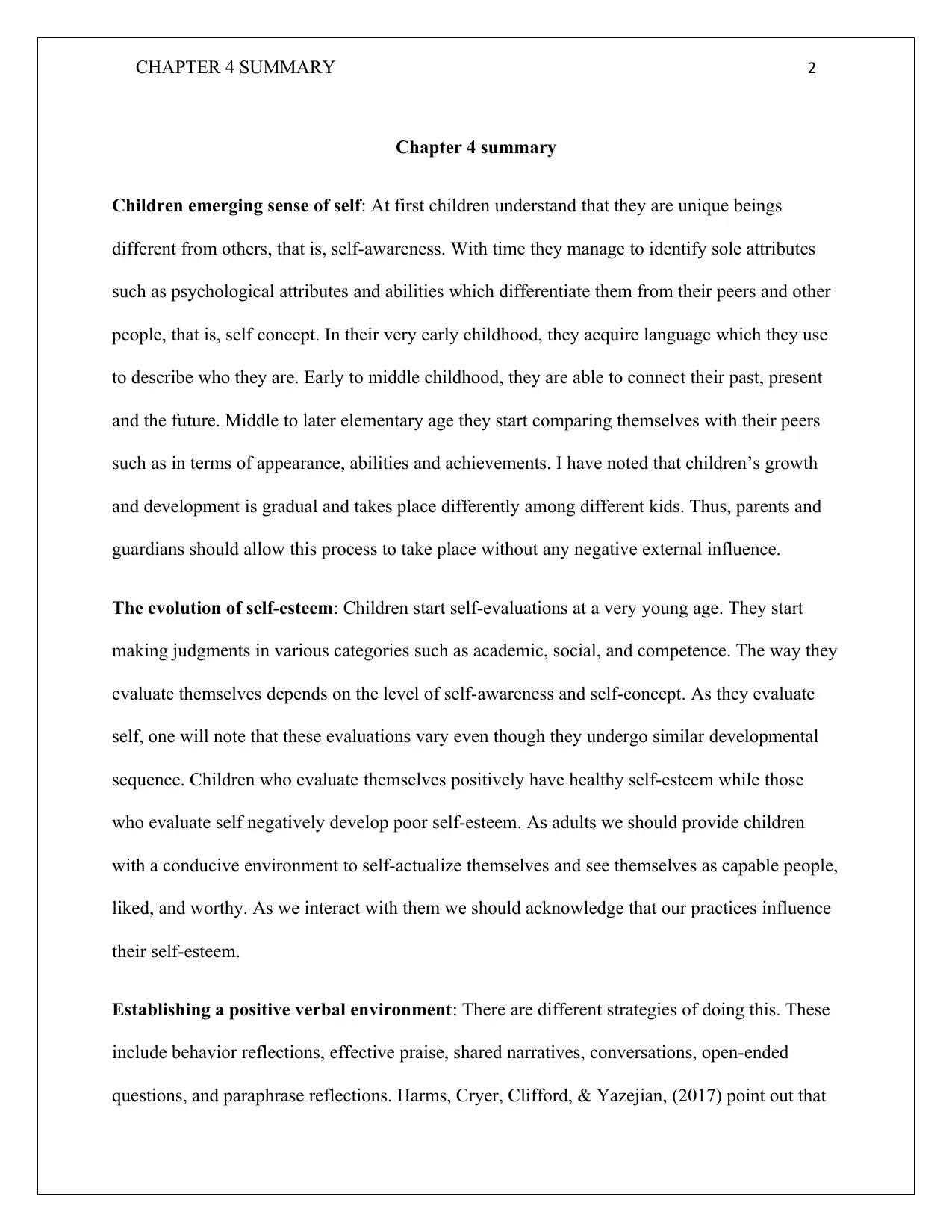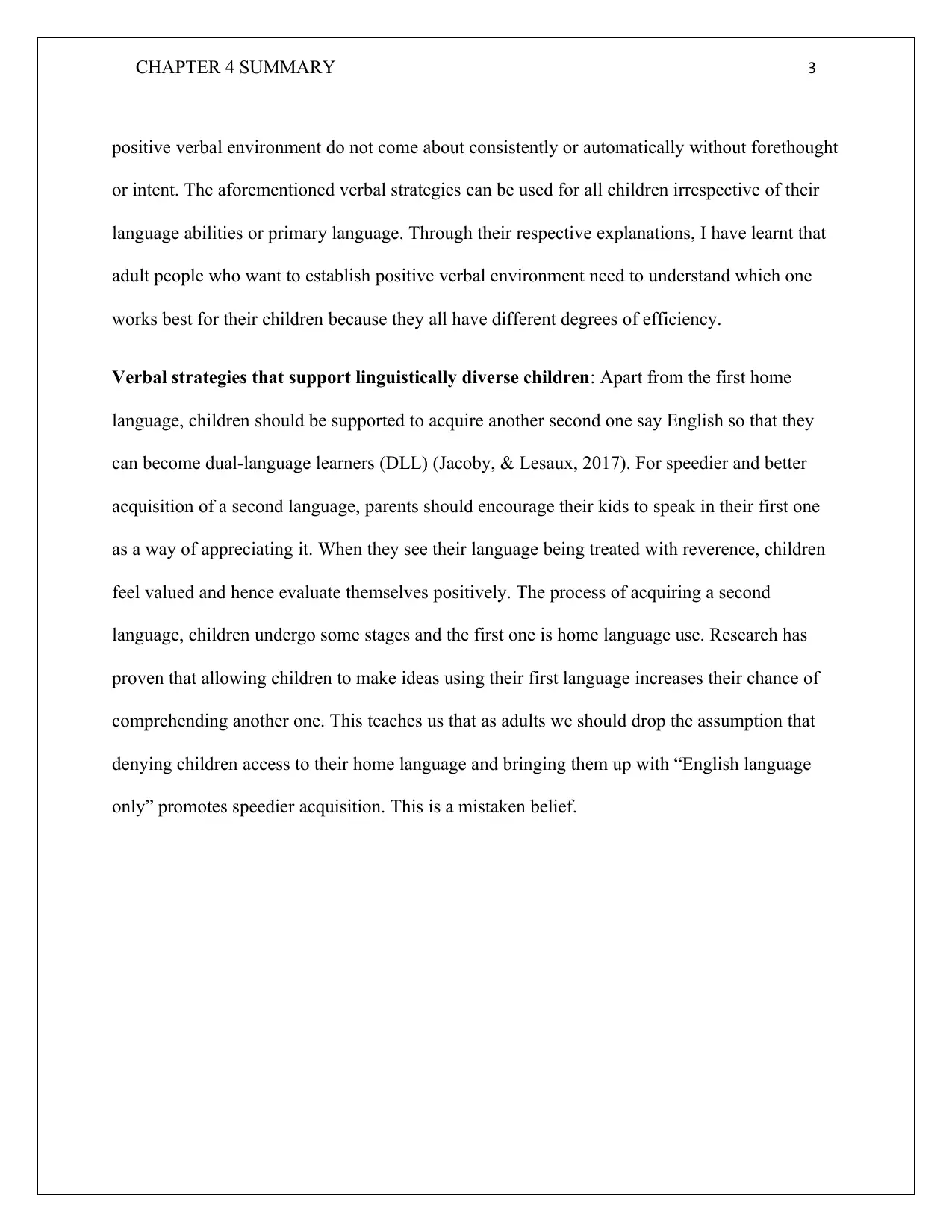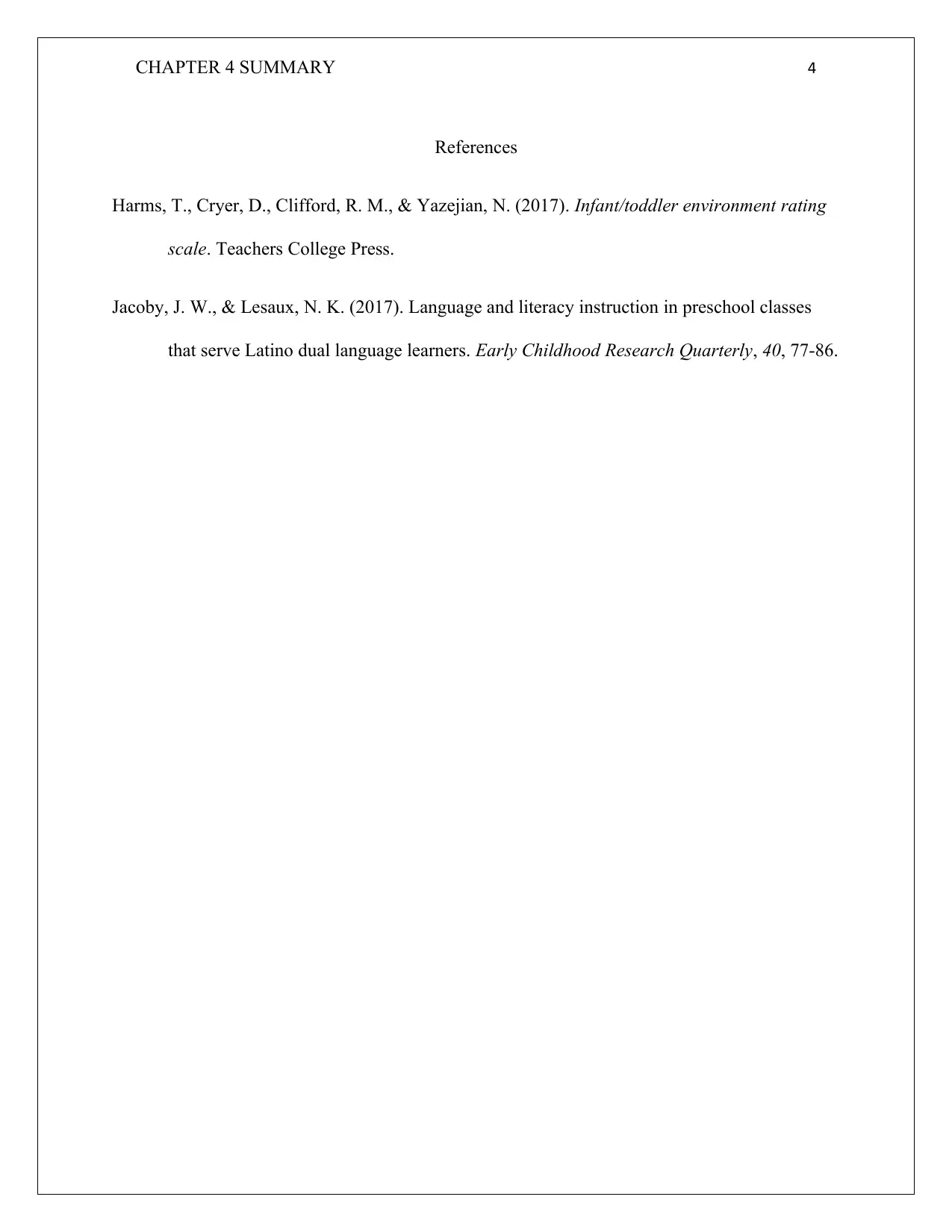A Summary of Chapter 4: Children's Self-Esteem and Verbal Strategies
VerifiedAdded on 2023/06/03
|4
|662
|357
Summary
AI Summary
This summary of Chapter 4 discusses the development of children's sense of self, starting with self-awareness and progressing to self-concept, including the ability to connect past, present, and future. It highlights the importance of children's self-evaluations and the development of self-esteem, emphasizing the role of adults in providing a supportive environment. The summary also covers strategies for establishing a positive verbal environment through behavior reflections, praise, shared narratives, open-ended questions, and paraphrase reflections. It addresses the support of linguistically diverse children, particularly dual-language learners (DLL), and stresses the importance of valuing their first language to enhance second language acquisition, advocating against the mistaken belief that exclusive English instruction promotes faster learning. The document references relevant research to support its points.
1 out of 4











![[object Object]](/_next/static/media/star-bottom.7253800d.svg)